A mid-season carrot variety with a high yield: Moscow winter A 515
Carrots planted before winter give a harvest two weeks earlier than spring carrots. For these purposes, the Moskovskaya Zimnyaya A 515 variety has proven itself well. It was bred specifically for cultivation in the northern regions of Russia.
The content of the article
Description of the carrot variety Moscow winter A 515
Variety Moscow winter 515 belongs to the mid-season and was originally intended for cultivation before winter... Spreading bush, leaves are long, dissected. Root crops are smooth, eyes are small. At the end of ripening, the base of the vegetables acquires a greenish or purple hue.
Origin and development
Winter Moscow carrot belongs to the Shantane cultivar. It was bred by the outstanding breeder S.P. Agapov by crossing the best winter varieties. Moscow winter has gained wide popularity and is grown in Russia, Ukraine and Moldova.
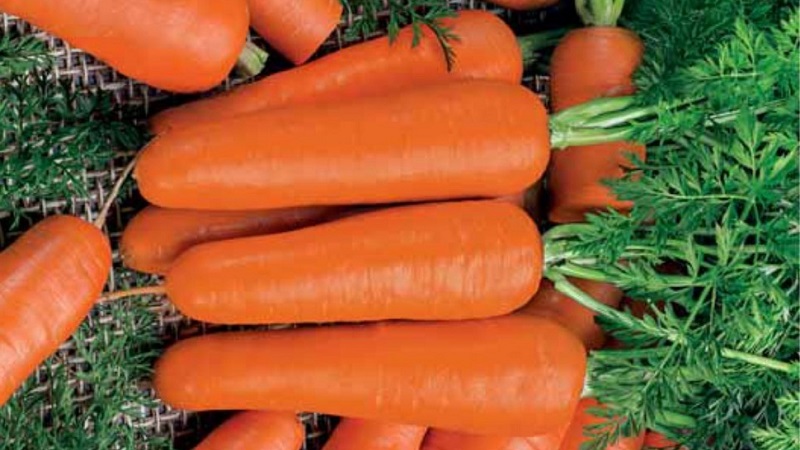
Chemical composition, trace elements and vitamins, useful properties
100 g of carrots contains only 24.5 kcal... Nutritional value is a rich set of vitamins, macro- and microelements.
The content of macronutrients in root crops:
- potassium - 205 mg;
- calcium - 24.3 mg;
- phosphorus - 48 mg;
- magnesium - 35.2 mg;
- sodium - 17.4 mg;
- sulfur - 4.6 mg.
Microelement content:
- iron - 0.78 mg;
- zinc - 0.34 mg;
- aluminum - 0.23 mg;
- manganese - 0.2 mg;
- boron - 0.21 mg;
- copper - 0.72 mg;
- fluorine - 0.51 mg.
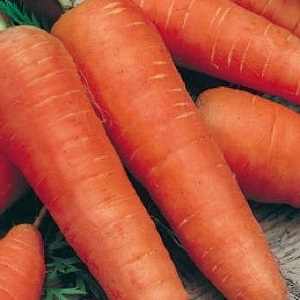 Vitamin content:
Vitamin content:
- A - 0.92 mg;
- B1 - 0.07 mg;
- B2 - 0.05 mg;
- B9 - 0.11 mg;
- C - 0.45 mg;
- PP - 1.22 mg;
- E - 0.75 mg.
Carrots have a beneficial effect on the body a person, in particular on the intestinal microflora, the work of the digestive tract, vision, helps prevent the formation of stones in the gallbladder and kidneys.
Application features
Carrot consumed fresh, used for making juices, mashed potatoes, canning - for all types of processing and winter storage.
Ripening period and yield
The ripening period of this mid-season variety is within 70-100 days. The yield is 7 kg per 1 sq. m.The average yield per hectare is about 30 tons. The maximum indicators were noted up to 100 tons.
Disease resistance
Subject to the rules pre-sowing treatment and disinfection of seeds, crop rotation and competent cultivation, carrots have a high resistance to fungal diseases and most pests.
Characteristics, description of appearance, taste
The shape of the roots of the Moskovskaya Zimnyaya 515 cultivar is elongated-conical with a blunt end. Length - 16-18 cm, average weight - 120-170 g, diameter at the base - 5 cm... The color of the carrot is orange with a reddish tint, the pulp is rich orange, homogeneous, juicy. There are a small number of lateral roots, the eyes are small. The variety has an excellent sweet taste.

Growing regions and climate requirements
Suitable for growing North-West, Central, Volgo-Vyatka, Central Black Earth and Middle Volga regions. The variety was originally intended for cultivation in the Moscow region.
Most often it is used for sowing in the northern regions.: Leningrad region, in the Urals, in Siberia.
Advantages and disadvantages
Benefits of the variety:
- resistance to diseases and pests;
- high yield rates;
- resistance to color;
- high keeping quality - 98%;
- the possibility of sowing in spring and before winter.
Lack of variety in poor tolerance to an arid climate.
Difference from other varieties
Moscow winter is different from other varieties:
- longer germination period;
- the possibility of planting in spring and before winter in almost all regions;
- the variety is most often recommended for fresh consumption during the winter.
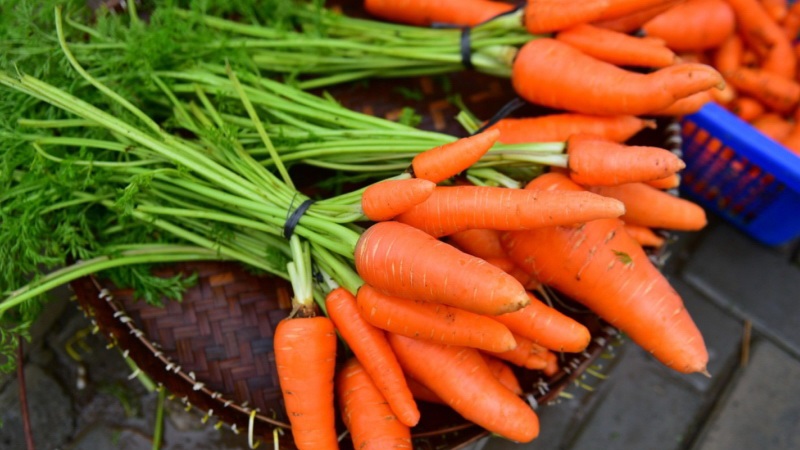
Features of planting and growing
For winter cultivation, carrots are planted at the end of October when the daily temperature drops to 5 ° C. For planting, a well-lit area with fertile loose soil is chosen. The seeds endure snow cover and snowless periods of winter. When planting before winter, it is recommended to mulch the soil.
Spring sowing is carried out in April.
Preparing for landing
When planting in spring, the seeds are pre-prepared... Damaged seeds are discarded first. The rest are soaked in water for 1.5-2 hours. Quality seeds will sink to the bottom of the container, unusable and empty ones will be on the surface of the water. They are thrown away.
Then the seeds are disinfected in a solution of potassium permanganate or "Fitosporin M" for an hour. After that, the seeds are germinated on a damp cloth in a warm, light place for 5-7 days. For better germination and further growth, the tissue can be moistened with a growth stimulator ("Epine" or "Zircon").
If the seeds are planted in the fall, they do not need to germinate.... During the winter under the snow and in the spring when it melts, the seeds will become saturated with water and sprout.
Ground requirements
This carrot variety prefers well-drained, neutral soil... Good yields are achieved when grown on loamy prepared soils.
The culture does not tolerate acidic soil. Before planting, they dig up the earth, freeing it from stones and strongly compacted pieces. Carefully remove plant residues from the last season. Then the soil is leveled and grooves are made.
Other varieties and hybrids of carrots:
High-yielding, juicy and sweet hybrid of F1 carrots Abaco
Predecessors
The best predecessors of carrots are cucumbers, zucchini, onions, tomatoes.... The variety is not recommended to be planted after dill, parsley, parsnips, since they and carrots have the same diseases and pests.
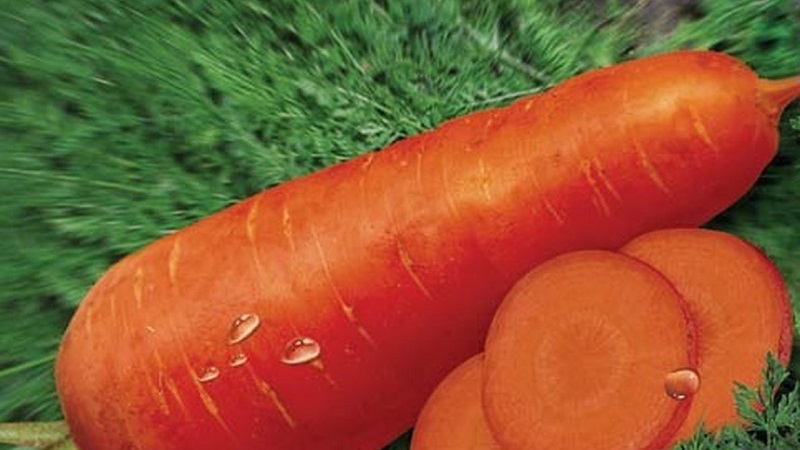
Timing, scheme and landing rules
Planting seeds in open ground is carried out in late April - early May.... By this time, the soil warms up to + 6 ... + 8 ° С. In the prepared area, grooves are made 2 cm deep, leaving a distance between the rows of 19-20 cm. The grooves are watered with warm water and the seeds are placed in them at a distance of 2-3 cm from each other. Then the grooves are covered with soil without tamping.
Autumn planting is carried out in early Novemberwhen the soil temperature drops to 5 ° C. At the same time, the grooves are not watered, the seeds are placed to a depth of 3-4 cm with an interval of 3 cm and sprinkled with earth mixed with sand. The beds are mulched with peat in a layer of 4-5 cm.
Reference. When planting before winter, the seeds are not soaked.
Growing features
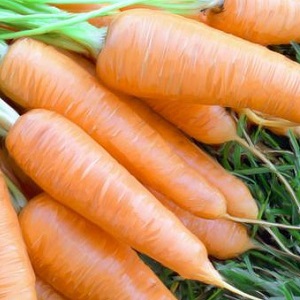 When sowing carrots before winter, you need to choose even beds, without slopes... In the spring, when the snow melts, the melt water can wash away the seed.
When sowing carrots before winter, you need to choose even beds, without slopes... In the spring, when the snow melts, the melt water can wash away the seed.
When sowing crops in autumn, the beds must be insulated with agrofibre in order to protect carrot crops from frost. It will not let them freeze when the temperature drops to -8 ° C. In addition, water passes well through agrofibre. In case of precipitation, moisture will moisten the beds.
Big attention is paid to the removal of the soil crust by loosening the top layer of the soil... The dense crust prevents air from reaching the roots.
Watering mode
Emerging seedlings must be watered every three days in the morning with warm water... As soon as the plants get stronger, watering is reduced to once every 7-8 days. As the culture grows, the volume of the introduced liquid is increased. The soil should be soaked 23-25 cm deep.
Important! Watering should be regular. The alternation of drying out of the soil and its excessive moisture leads to cracking of root crops.
Two weeks before harvest watering is stopped.
Thinning and weed control
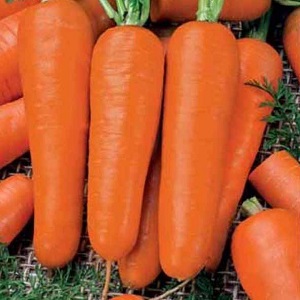 Great attention is paid to the timely thinning of seedlings... The first thinning is carried out when two pairs of leaves appear on the seedlings. Weak shoots are removed, leaving a distance of 2 cm between plants.
Great attention is paid to the timely thinning of seedlings... The first thinning is carried out when two pairs of leaves appear on the seedlings. Weak shoots are removed, leaving a distance of 2 cm between plants.
The culture is thinned a second time when the roots are formed. The distance between the plants is increased to 3-4 cm.
The next thinning is carried out as the plantings thicken, removing underdeveloped specimens and leaving a distance of 5-6 cm between plants.
Attention! The formed holes from distant seedlings must be covered with earth.
Thinning removes weeds at the same timethat interfere with the normal growth of culture.
The soil is loosened after each watering or rain. This should be done to ensure air access to root crops.
Top dressing
For the formation and growth of root crops, feeding is necessary.
The first feeding is carried out after the appearance of two pairs of leaves on the seedlings. At this point, nitrogen fertilizers are required. The soil is watered with a urea solution: 10 g of the drug per 10 liters of water.
The second feeding is carried out three weeks after the first. Potassium and phosphorus are introduced, which are necessary for the formation of root crops. The following composition is used: 20 superphosphate and 15 g of potassium sulfate per 10 liters of water. This top dressing is needed at the end of June.
Third feeding is performed 20 days after the second, in July. At this time, the culture needs boron and manganese for pouring root crops. Prepare the composition: 2 g of potassium permanganate and 3 g of boric acid are dissolved in 10 liters of water. The solution is poured over the beds.
A solution of wood ash is often used: 300 g of ash are poured into 10 liters of hot water and insisted for two days. The solution is poured under the root. You can apply dry ash - scatter 1 glass around each plant.
Nitrogen fertilizers are no longer used.
Attention! It is not recommended to apply cow dung, as it negatively affects the keeping quality of the culture.
Since winter carrots germinate two weeks earlier, all dressings are carried out earlier according to a scheme similar to spring carrots.
Disease and pest control
Culture is often overwhelmed such diseases:
- Fomoz... First, the tops get sick, becoming covered with gray-brown spots. Gradually, the disease spreads to root crops, leading to large storage losses. Phomosis can be prevented by the introduction of potash fertilizers during the growing season. Affected plants are treated with copper-based preparations. At the first manifestations of phomosis during the growing season, 1% Bordeaux liquid is used: 100 g of copper sulfate and 150 g of lime are dissolved in 5 liters of hot water and filtered. Plants are sprayed in the morning.
- Alternaria, black rot... The disease is infectious in nature, transmitted through seeds and contaminated soil. It starts with blackening of the leaves and stem, then moves on to root crops. Spraying in the evening can provoke the disease. To combat rot at the initial stage, the drug "Rovral" is used. A 1% solution is prepared (1 g of the fungicide is diluted in 1 liter of water) and the affected plants are sprayed at the first sign. With this composition, you can water the soil with 0.5 liters for each plant.
- Bacteriosis affects the culture during the growing season. Yellow patches appear on the lower leaves, and they darken with growth. The stems are covered with dark brown spots.Over time, brown wet patches form on the roots. To prevent the disease, three weeks after the emergence of seedlings, spraying with the preparation "HOM" is carried out (40 g of the preparation is diluted in a bucket of water).
- Brown spot, cladosporium... Bungs, brown spots appear on the leaves, dark stripes appear at the bottom of the stem. Then the leaves curl up, the tops and roots rot. For prevention, it is recommended to introduce an increased dose of potassium and phosphorus. At the first signs of damage to the tops, the "Barrier" preparation is used: dissolve 8 g in 10 liters of water and spray the tops and leaves from the upper and lower sides.
Dangerous for carrots and some pests:
- Often the culture is affected by the carrot fly (pictured below). In the fight against it, wood ash pollination is used. With a large number of insects, plants are treated with insecticides "Aktara", "Decis".
- Carrot lily sucks juices from plants, tops dries up, roots stop growing, become dry and hard. In case of an invasion of insects, plants are treated with "Intavir", "Aktellik".
- Naked slugs feed on vegetative parts of the culture, destroying crops. Then they lay eggs in the ground, interfering with the growth of root crops. To prevent the appearance of slugs, it is necessary to remove all plant residues from the site in the fall, in which the mollusk is hiding. The composition is introduced into the soil: 200 g of lime, 250 g of wood ash and 500 g of superphosphate. In the spring, after planting seedlings, the beds are sprinkled with crushed eggshells - the delicate body of the slug does not tolerate scratching particles.
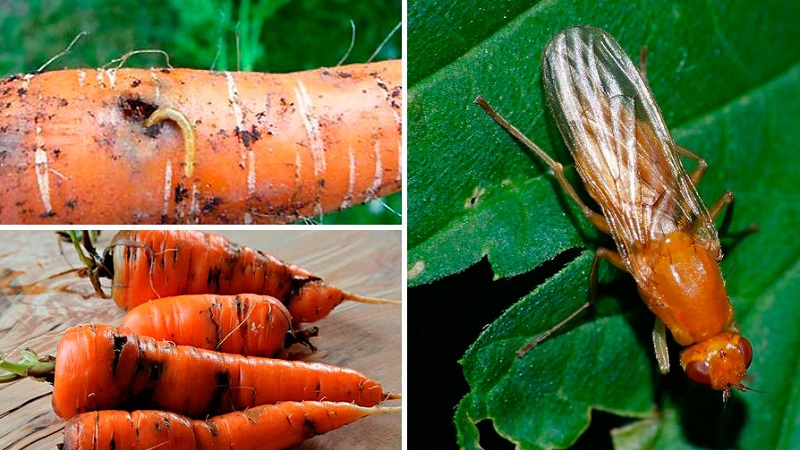
Growing difficulties
If the rules of agricultural technology are not followed, the variety may develop "hairiness"... Such root vegetables are not stored for a long time. To prevent the abundant growth of roots, it is necessary to loosen the soil in time, apply additional fertilizing and water in a timely manner.
Read also:
Harvesting and storage
The degree of maturity of the root crop is judged by overgrowing with its small roots and color change to a red-orange tint. Usually full ripening occurs in mid or late September.
How and when to collect
After 70-100 days from planting, observe the beginning of yellowing of the lower leaves of the tops... It speaks of the maturity of vegetables. At this time, around August, the harvest begins. Since winter carrots ripen earlier, they are harvested in mid-July.
Choose dry weather for harvesting... Vegetables are harvested by hand by pulling the tops. If necessary, carrots are removed from the soil with a pitchfork. Raise together with the soil, holding the tops, shake off easily. The greens are twisted or cut, the vegetables are sorted: the damaged ones are put aside for processing, the rest are laid out in a dry room to dry for 5-6 days. Then the carrots are placed in a prepared container and transferred to the vegetable storage.
Storage features and keeping quality of the variety
Store carrots in a well-ventilated area at an air temperature of + 2 ... + 4 ° С. The humidity in the room is maintained at 85-90%. Under the recommended conditions, the keeping quality of the variety reaches 98%.
Tips from experienced gardeners
Experienced gardeners advise:
- for sowing before winter, use 25% more seeds than for spring sowing;
- when sowing before winter, delay the planting period as far as possible so that during thaws the seeds do not have time to germinate.
It is also noticed that with a lack of potassium in carrots, young leaves twist.
Reviews of the variety of carrots Moscow winter A 515
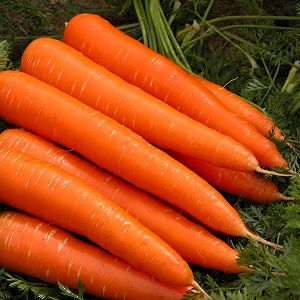 Summer residents and farmers characterize the variety as easy to grow, producing a crop with excellent taste and keeping well in the cellar during the winter.
Summer residents and farmers characterize the variety as easy to grow, producing a crop with excellent taste and keeping well in the cellar during the winter.
Svetlana, Krasnodar: “For several years I was going to try to plant carrots before winter. Last year I made up my mind. I planted the Moscow winter variety A 515. I liked the result very much. The carrots have grown delicious, juicy ".
Evgeniy, Saratov: “The relatives shared the seeds of the Moscow winter carrot. For comparison, I planted seeds in November and April. Winter seeds sprout a little earlier. They grew up the same. I collected a lot of vegetables. I liked the taste ".
Irina, Moscow region: “I liked planting Moscow winter carrots A 515 for the winter. The main thing is to cover the beds well. In the spring, do not rush to watering. The ground dries for a long time after snow. I liked the harvest by the quantity and quality - the roots are tasty, juicy ".
Conclusion
Variety Moscow winter A 515 is suitable for sowing in late autumn and spring. Carrots are characterized by a high content of carotene, which is retained during a long shelf life.
Studying the characteristics of the variety, the rules for its sowing and cultivation will allow you to get a good harvest of tasty, sweet root vegetables, recommended for fresh consumption in salads during the winter.